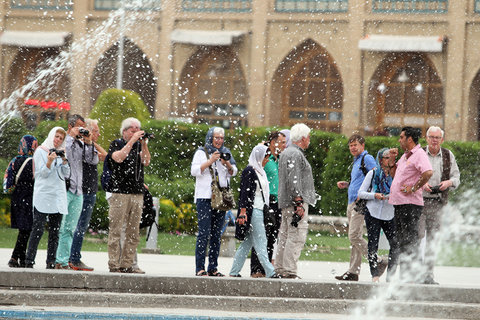Iran (IMNA) - While the country is generally more appealing as a historical site for Western tourists, its image in mainstream media often portrays it as backward and associated with doom and gloom. This negative perception is frequently challenged by the surprise of many tourists upon visiting Iran, where their preconceived notions quickly crumble.
With a civilization and history spanning several thousand years, Iran offers a wealth of modern attractions not only in the capital, Tehran, but also in major cities such as Isfahan, Shiraz, Mashhad, and Tabriz. Tourists can also explore beautiful areas along the Caspian Sea in the north and the southern Persian Gulf coasts, including Kish Island.
Iranian culture is rich and diverse, showcasing a unique production of art and recreation. From Persian poetry to humor and music, the country’s literary legacy is marked by celebrated luminaries, each with their distinctive styles and lasting influence. Visual arts hold a special place in Iranian culture, with the Persian carpet serving as a brilliant manifestation of the Iranian people's artistic sensibility. Intricate enameling, marquetry, wood carving, and various other art forms further reflect the nation's appreciation for beauty and elegance.
The elements of Iranian culture extend beyond its borders, with traces found in neighboring countries. Iran is home to one of the world's oldest continuous major civilizations, with historical and urban settlements dating back to 4000 BC. A recent study by a team of archaeologists from Germany, Denmark, and Iran, published in the peer-reviewed journal Scientific Reports, identified the Persian Plateau as a potential region for interbreeding between Neanderthals and Homo sapiens during the Late Pleistocene.
Iran also hosts followers of monotheistic religions, including Jews, Zoroastrians, and Muslims, with nearly 9,000 religious sites across the country. Over 3,000 of these are sacred sites, such as mosques, religious schools, churches, synagogues, crematoriums, and shrines. Religion has significantly influenced the development of cities like Mashhad, Qom, Ray, Shiraz, Qazvin, Natanz, Shahrood, Shush, Bastam, Lahijan, Amol, Ardabil, and Gonbad-e Kavus, which have great potential for religious-cultural tourism.
Additionally, Iran is a regional hub for medical tourism due to its high service standards and reasonable costs, ranking among the top five countries in biotechnology. Currently, a quarter of Iran’s hospitals offer health tourism services in various specialized fields, complemented by an abundance of natural hot springs with therapeutic qualities that attract millions of tourists.
With its diverse natural landscape, Iran features unique attractions ranging from magnificent beaches to mysterious arid deserts, rolling mountains, meadows, and forests. Despite its significant place on the global tourism map, Iran's share of global tourism receipts remains low.
Due to coercive measures by the U.S. government against Western tourists visiting Iran, the Islamic Republic is now focusing on attracting visitors from Persian Gulf Arab states and other nearby countries. Earlier this year, Iran lifted visa restrictions for tourists from 28 countries and is drawing more visitors from Russia and China to its ancient sites that date back to the Persian Empire and the fabled Silk Road.


Your Comment